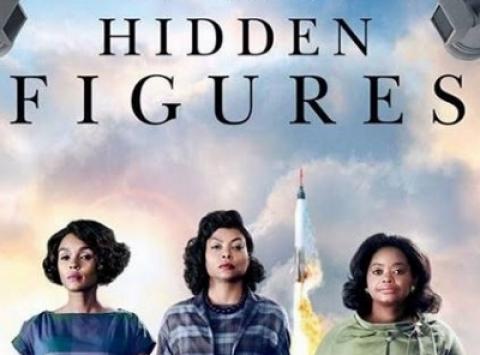“Just ’cause it’s the way doesn’t make it right.”
It’s the 1960s in Jim Crow-era Virginia. Dorothy Vaughan — the manager of a group of “computers,” or clever National Aeronautics and Space Administration mathematicians, all of whom are black women — delivers this line, sagely, to her two sons. They’ve just been kicked out of a library for going to a “whites only” section.
On the one hand, Theodore Melfi’s Hidden Figures, based on Margot Lee Shetterly’s non-fiction book of the same name, is a look back at the past. It brings center-stage the remarkable stories of three black women — Katherine Goble, Mary Jackson, and Dorothy, played by Taraji P. Henson, Janelle Monáe, and Octavia Spencer, respectively — whose weighty contributions to the mid-century Space Race had, until recently, lived nearly forgotten, tucked away on the fringes of United States history.
In the film, America is approaching the peak of the civil rights movement, and each of the central characters has her own dragon to slay. At NASA, Dorothy has (as she puts it) “the responsibilities of a supervisor but not the title or pay,” and every time she asks about a promotion, she’s given the run-around. Katherine is miles smarter than her bigoted, all-white, all-male peers, but they doggedly try to smother her shine and won’t so much as drink from the same coffeepot as her. Mary, meanwhile, must navigate Virginia’s racist legal system — which ignores the rights affirmed in Brown v. the Board of Education — to take extra engineering classes, the hitch being that the only school offering those classes is segregated.
Together, these struggles speak to a specific moment in American history. Yet the film’s power lies in that line from Dorothy — “Just ’cause it’s the way doesn’t make it right.” Hearing that line, you recognize that this isn’t ancient history, that it has a certain clairvoyance to it — indeed, the mandate not to normalize something “just ’cause it’s the way” speaks to the present political season with alarming relevance.
With President Barack Obama’s presidency nearly at its end, and with President-elect Donald Trump’s inauguration only days away, we’re on the cusp of an era where a sinister cocktail of racism and sexism at the top levels of American power seems all but inevitable. Trump’s pick for attorney general has reportedly called the National Association for the Advancement of Colored People “un-American,” and his choice for secretary of housing and urban development referred to desegregation efforts as “failed socialist experiments.” And this is to say nothing of Trump’s own flagrant penchantfor sexual assault. At the helm of the world’s most powerful country, Trump will shortly team up with a Republican-controlled everything — including the House of Representatives, the Senate, and potentially the Supreme Court — to enact an agenda that mirrors decades-old attempts to repeal gender and racial equality.
So what’s to be done? Hidden Figures offers a crystal-clear answer: Resist.
At one point, when Mary is agonizing over how she’ll never be able to take classes at an all-white school, Dorothy says, “I’m not going to sit here all day and listen to you complain about the way things are…. Petition the court. Fight for what you want. But quit talking about it.” Mary does exactly that, and she convinces a court to allow her to attend night classes.
Or take Katherine, who’s locked in a dual battle to prove her genius while preserving her dignity. After the head of her department, Al Harrison (Kevin Costner), berates her in front of the entire office for her long bathroom breaks, she sounds off. “There are no colored bathrooms in this building, or any building outside the west campus, which is half a mile away,” she says. “So excuse me if I have to go to the restroom a few times a day.” In the next scene, Al takes a crowbar to a “colored ladies room” sign, effectively desegregating the NASA bathrooms.
Hidden Figures has its shortcomings as a revolutionary manifesto, of course: The scene above is a sterling example of one of them. While Al, we can assume, means well when he helps Katherine, this bit of the narrative betrays how way the film plays, even panders, to white audiences — as if smashing racist power structures is only worth seeing if it’s done by an enormously bold white person. There’s also the uneasy feeling that comes when a film decides to redeem every racist white character, including the loathsome Mrs. Mitchell, played by a stone-cold Kirsten Dunst, who, for a majority of the film, sees nothing wrong with being an unquestioning cog in a lopsided racial hierarchy.
Nonetheless, the movie, however unintentionally, taps into the current political moment. Hidden Figures shows us what — and who — resistance can look like. In an interview with Atlanta magazine earlier this month, Monáe commented on the opportunity she saw in portraying a different sort of black woman on the big screen: “I wanted to honor these women. They’re pioneers,” she said. “These are women who changed the world, American heroes. But because of historical circumstances, their stories were never told. We all felt a responsibility to these women who opened up doors for my generation.”
It’s possible to flip history’s script. We know because we’ve seen it done before — all we have to do is look at the quiet triumphs of a small group of black women who built a pipeline to the stars.


Spread the word